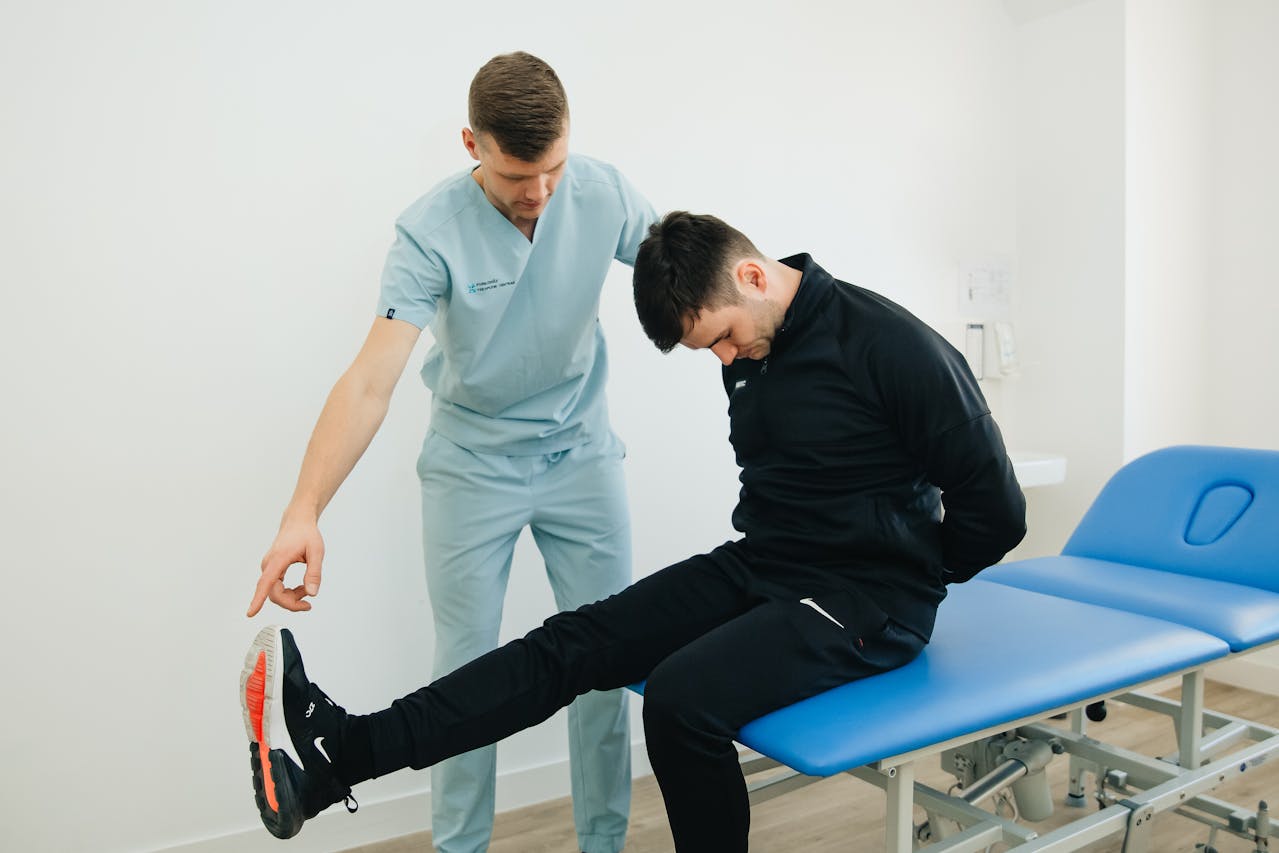Periods of inactivity can lead to blood clots in the legs; pregnant women are, also, at an increased risk due to hormonal changes in the body increasing the ability of the blood to clot quickly in preparation for labor and delivery.
Blood clots in the leg, known as deep vein thrombosis or DVT, are coagulated blood cells that stick to the inside of the deep vein impeding blood flow. Tell your doctor right away if you notice unusual tenderness or swelling in either leg, as this can be a symptom of a blood clot. These can be serious, especially if the clot breaks free and travels to the heart or lungs causing a pulmonary embolism or PE.
If your doctor places you on bed rest, it is because he or she feels that the benefit of the treatment is worth the risks. Make sure to discuss the potential for blood clots and whether he or she feels you’re at risk. Pregnancy bed rest and DVT often go hand in hand, but there are steps you can take to lower your risk of DVT while you’re on bed rest.
Your doctor may recommend compression stockings during pregnancy, especially if you’re on bed rest. These fitted stockings are designed to increase venous circulation in the legs, which can help prevent swelling and blood clots. Remember to drink plenty of water while you’re on bed rest to keep your blood from thickening due to dehydration allowing better blood flow lowering the risk of DVT.
Exercise can help prevent blood clots and is something you’ll definitely want to discuss with your doctor, since the very reason he’s prescribing bed rest is to reduce your physical activity. However, there are usually some basic exercises you can do to increase your circulation.
Bed Rest During Pregnancy Exercises
Most doctors agree that while on bed rest, it is still a good idea to exercise. Nothing strenuous, which would defeat the purpose of the bed rest, but small motions can help prevent blood clots and keep your body from feeling the inactivity completely.
Stress balls are a good thing. Not only does regular use strengthen your forearms, but you can also squeeze them between your ankles to give your inner thighs some exercise. For other upper body exercises, you can lift some small weights (or a soup can or two) to keep your arms strong for carrying around a newborn. And even without exercise paraphernalia, rotating or rolling your ankles or pulling your knees up toward your chest can have a huge benefit.
One thing to keep in mind with best rest exercises during pregnancy is to not over work your abdominal muscles. This can put increased pressure on the uterus. Depending on the reason your doctor prescribed the bed rest, this might be detrimental to both your health and your baby’s health. Always talk to your doctor about what bed rest exercises will be best for you.
Surviving Bed Rest During Pregnancy
Bed rest doesn’t have to be like house arrest. Use the opportunity to organize your address books, photo albums, and recipe books before all your time is devoted to taking care of your new baby. It helps to alleviate boredom, too.
Since your life is going to change with the arrival of your baby, use your bed rest time to plan for those changes. Budgeting, purchasing baby products on the internet, choosing a name, planning the nursery— these are great ways to keep you from getting bored and will be a big help after your baby arrives.
Women on bed rest during pregnancy find that having a daily schedule helps pass the time and makes you feel like you have a purpose. Because of that, it’s highly recommended that in those early days of bed rest, you come up with a schedule that works for you and then stick to it.
Bed Rest During Pregnancy Survival Kit
Before you start bed rest, make yourself what is playfully called a survival kit. This is a group of things to keep close by for easy access to things to occupy your time. (These also make great gifts for moms-to-be who are on bed rest!)
Use a wicker basket, a large shopping bag, or a plastic hamper to keep everything handy. Include items you feel you’ll need frequently. Good starting ideas include crossword puzzles, word search, or Sudoku. Even if you don’t plan on keeping a pregnancy journal, always keep writing paper and a couple of pens or pencils nearby because you never know when you’re going to need to write something down.
If you’re like most of us, you’ll want your cell phone, tablet or a laptop nearby. Make sure you include the chargers for each, and if there isn’t a plug nearby, run an extension cord so you don’t have to get up to plug and unplug them. You will want to have the TV and DVD player remotes within reach. Even though it isn’t something that can be placed in a basket, include a subscription to Netflix or Hulu in your survival kit.
Finally, pick a friend or family member to set up a Meal Train for homemade meals delivered to your house by your friends and family every day. This will also provide opportunities to socialize and prevent that feeling of isolation, which can lead to depression.
Other miscellaneous things to include are some bottles of water, a few books, healthy snacks like nuts or dried fruit, tissues, a hair brush, Chapstick, nail clippers, and lotion. Of course, remember your compression stockings, prescriptions your OBGYN provides you, prenatal vitamins and any stretching and exercise equipment (like your exercise ball). There are many other things you might include in your survival kit. Just think about it a bit and go ahead and add them!
You can do it!
If you’re one of the many women who are put on bed rest during pregnancy, just remember that it’s temporary. Some women know it’s coming (such as those having multiples or who have been on pregnancy bed rest before) and are able to plan ahead for it. For others, it might come as a surprise, such as a test result from a routine check up. However, as long as you plan out your days, manage your time, do your bed rest exercises, and have a thorough bed rest survival kit, you’ll get through it. And at the end of it all, when you’re holding your newborn baby in your arms, it’ll make everything worth it.
Postpartum Recovery
After you give birth to your beautiful bundle of joy, it may be tempting to relax as much as possible. While this is good for recovery from the stress of childbirth, there are still some opportunities for stretching and light exercise that you should do (with the guidance of your doctor) in order to continue preventing blood clots and varicose veins. Follow our tips for postpartum recovery and venous disease in our last article.











